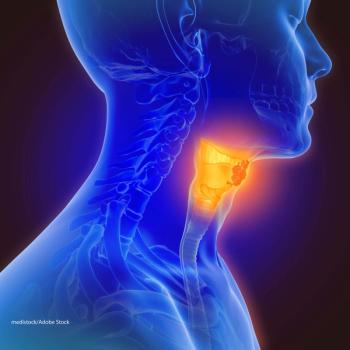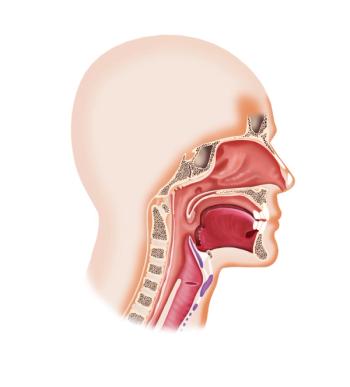
Role of BRAF in Papillary Thyroid Carcinoma Still Unclear
A new study of the relationship between BRAF V600E mutation status and its effect on papillary thyroid carcinoma found a negative association with clinicopathologic features suggestive of more aggressive disease.
A new study of the relationship between BRAF V600E mutation status and its effect on papillary thyroid carcinoma found a negative association with clinicopathologic features suggestive of more aggressive disease.
Based on the results of this study, Christopher Gouveia, MD, of the University of California, San Francisco, and colleagues suggested that previously suggested aggressive initial therapies for BRAF-positive patients with this disease “should be tempered” until more is known.
Looking at the current research exploring the role of BRAF in papillary thyroid cancer, outcomes from trials have been inconsistent, the researchers wrote in their study
In an attempt to find out more about this topic, Gouveia and colleagues conducted a large, retrospective, single-institution study of 429 patients with papillary thyroid carcinoma with (73.2%) and without the BRAF mutation (26.8%).
Although a univariate analysis indicated that BRAF mutation was associated with tumor margin positivity (P = .03) and lymph node metastasis (P = .002), examination on a multivariate analysis did not find these associations to be significant.
The researchers found that BRAF mutation did predict male sex (OR = 3.2; 95% CI, 1.4–7.2) and total thyroidectomy (OR = 2.6; 95% CI, 1.1–6.2). In addition, the mutation was also found to be a negative predictor of follicular variant of papillary thyroid carcinoma (OR = 0.1; 95% CI, 0.1–0.4).
However, when looking at a variety of other negative prognostic indicators-including tumor multicentricity, lymphovascular invasion, extranodal extension, central neck involvement, advanced stage, and distant metastasis-no association was found with BRAF positivity.
In their discussion of the results, the researchers mentioned several reasons why their results might vary from prior studies including the fact that this was a larger study and that about 75% of patients were BRAF positive, which would be considered to be within the range of prior studies,” but “on the higher end of the spectrum.”
“The results of the present study show little correlation between BRAF V600E mutation and negative prognostic indicators in papillary thyroid carcinoma,” the researchers wrote. “If anything, the absence of BRAF mutation may prove to be a favorable prognostic indicator and a basis for de-escalation of therapy, such as more selective use of radioactive iodine or lymph node dissection, in patients with papillary thyroid carcinoma.”
Newsletter
Stay up to date on recent advances in the multidisciplinary approach to cancer.
































































































